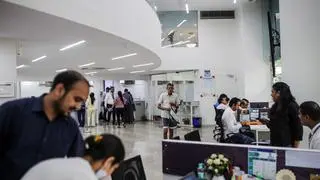The collection operations of microfinance institutions (MFIs) that had come to a halt amid the Covid-19-led lockdown, has been gradually improving over the past three to four months. Initial checks with the industry suggest that the average collection levels are about 75 per cent currently (August end), with some states continuing to witness lower collections owing to other external events such as floods. While states such as Gujarat and Tamil Nadu have seen 80-85 per cent collection efficiency, others such as Odisha, West Bengal and Bihar have lower collection efficiency of 70-75 per cent.
For MFIs, as a chunk of the loan repayments (95 per cent) are done through cash and loan officers meet in person and collect the payment from borrowers, the pandemic had hurt collection activity severely in March (end) and most of April.
Collection activity began to recover significantly in May and since then there has been a month-on-month improvement. However, the rise in infection among field officers is an industry-wide challenge given the nature of the MFI business.
“The last count suggests that 250 of our employees (at Arohan Financial Services), out of a workforce of 6,200, are infected by Covid-19. The risk of rise in infections is a persisting issue for MFI players,” says Manoj Kumar Nambiar, MD of Arohan Financial Services and Chairman of Microfinance Institutions Network (MFIN).
While borrowers have been coming forward and making payments on loans, the actual impact on livelihoods and incomes is yet to be fully assessed, according to Nambiar.
“This is the first month after the end of the six-month moratorium and we (industry) are in the process of gauging the full impact of the pandemic on livelihoods and income. There is considerable amount of stress at the ground level, though many borrowers have been coming forward and making repayments,” adds Nambiar.
On the disbursements front, the numbers are still much below the activity seen pre-Covid-19. As of end August, disbursements were at 55-60 per cent pre-Covid-19 levels on average across the industry, as MFIs continue to focus on collections rather than fresh lending. While there is demand, MFI players may need more clarity on income/livelihood losses and repayment capacity of borrowers before extending fresh loans.
Restructuring relief
Even as banks are busy finalising the modalities of the one-time restructuring option allowed by the RBI, MFI players too are prepping the pitch for extending the relief to their borrowers.
Under the RBI’s Resolution Framework for Covid-19-related Stress, lenders can offer one-time restructuring of loans, even for personal loans such as housing, auto, credit card, personal loans and education loans. A borrower is eligible for loan restructuring only if the loan account was a ‘standard account’ as on the date of application for relief and not in default for more than 30 days as on March 1, 2020.
“Within these broad guidelines set by the RBI, MFI players will be reaching out to borrowers offering the restructuring option in cases where they are unable to make repayments. But it will be critical to explain the full contours of the restructuring to borrowers as it will involve additional costs to them,” adds Nambiar.
Restructuring involves rescheduling of EMIs, grant of additional moratorium or extension of loan tenure (up to two years).
While the credit score of borrowers may not be directly impacted, it is important to remember that loans that are restructured will be recorded by the credit bureaus. Hence, lenders would be cautious extending more credit to such borrowers in future, says Nambiar.
The aggregate gross loan portfolio of MFIs stood at ₹74,371 crore across 3.22 crore clients as on March,31 2020. In terms of regional distribution of portfolio, East and North East account for 34 per cent of the total NBFC-MFI portfolio, South 27 per cent, North 13 per cent, West 15 per cent and Central contributes 11 per cent.









Comments
Comments have to be in English, and in full sentences. They cannot be abusive or personal. Please abide by our community guidelines for posting your comments.
We have migrated to a new commenting platform. If you are already a registered user of TheHindu Businessline and logged in, you may continue to engage with our articles. If you do not have an account please register and login to post comments. Users can access their older comments by logging into their accounts on Vuukle.